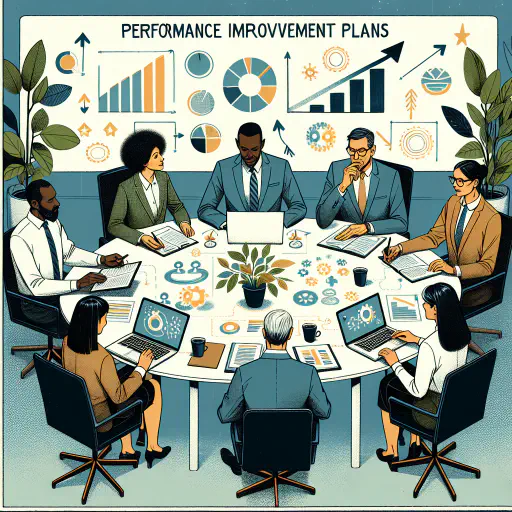
Avoiding Common Pitfalls in PIP Design and Execution
Are your Performance Improvement Plans failing to address employee performance issues effectively? Many organizations struggle with PIPs that don’t solve core performance problems. This often results from unclear expectations, poor communication, or lack of proper follow-up.
Addressing these issues is key to boosting productivity, retaining talent, and aligning individual performance with company goals. This blog will provide practical strategies to design and execute effective PIPs, helping you improve employee performance and achieve better organizational outcomes.
1. Understanding the Importance of Clear Expectations
Setting clear expectations is the foundation of any successful Performance Improvement Plan (PIP). Without well-defined goals and objectives, employees may struggle to understand what they need to improve and how to measure their progress.
To establish clear expectations:
- Define specific, measurable, achievable, relevant, and time-bound (SMART) goals
- Outline key performance indicators (KPIs) that align with company objectives
- Provide examples of what success looks like in the role
By setting clear expectations, you create a roadmap for improvement that both the employee and manager can follow.
2. Effective Communication Strategies
Poor communication can derail even the most well-intentioned PIP. To ensure effective communication throughout the process:
- Schedule regular check-ins to discuss progress and address concerns
- Encourage open dialogue and active listening
- Provide constructive feedback that focuses on specific behaviors and outcomes
- Document all discussions and agreements in writing
Remember, communication should be a two-way street. Encourage employees to share their thoughts and challenges, fostering a collaborative approach to improvement.
3. Implementing Proper Follow-up Procedures
Lack of proper follow-up is a common pitfall in PIP execution. To address this:
- Create a structured timeline for review and assessment
- Set clear milestones and deadlines for improvement
- Regularly monitor progress and provide timely feedback
- Be prepared to adjust the plan if needed based on ongoing performance
Consistent follow-up demonstrates your commitment to the employee’s success and ensures that the PIP remains a priority for both parties.
4. Providing Necessary Resources and Support
For a PIP to be successful, employees must have access to the resources and support they need to improve. Consider:
- Offering additional training or skill development opportunities
- Providing mentorship or coaching
- Ensuring access to necessary tools and technology
- Addressing any organizational barriers to success
By investing in your employees’ growth, you increase the likelihood of positive outcomes and demonstrate your commitment to their development.
5. Maintaining Objectivity and Fairness
To ensure the PIP process is effective and legally sound:
- Base performance assessments on objective criteria and documented evidence
- Apply consistent standards across all employees
- Involve HR or legal counsel to review the PIP for compliance with labor laws
- Be prepared to take appropriate action if improvement goals are not met
Maintaining objectivity and fairness throughout the process protects both the employee and the organization.
6. Balancing Accountability with Support
While PIPs are designed to address performance issues, it’s crucial to strike a balance between holding employees accountable and providing support. To achieve this:
- Emphasize the collaborative nature of the process
- Recognize and celebrate progress and improvements
- Be firm but empathetic in addressing shortcomings
- Offer resources for stress management or work-life balance if needed
By creating a supportive environment, you increase the chances of successful outcomes and maintain employee engagement during the PIP process.
7. Addressing Underlying Issues
Sometimes, performance problems are symptoms of deeper issues. To design truly effective PIPs:
- Conduct thorough root cause analysis of performance issues
- Consider factors such as workload, team dynamics, or personal challenges
- Be open to addressing organizational factors that may be impacting performance
- Offer employee assistance programs or counseling if appropriate
By addressing underlying issues, you can create more comprehensive and effective improvement plans.
8. Leveraging Technology for PIP Management
Technology can streamline the PIP process and improve outcomes. Consider:
- Using performance management software to track goals and progress
- Implementing digital tools for real-time feedback and communication
- Utilizing data analytics to identify trends and areas for improvement
- Ensuring all stakeholders have access to relevant information and updates
By leveraging technology, you can create more efficient and transparent PIP processes.
9. Preparing for Different Outcomes
Not all PIPs will result in improved performance. It’s important to be prepared for various outcomes:
- Define clear criteria for successful completion of the PIP
- Establish a plan for transitioning employees who successfully complete the PIP
- Develop procedures for handling cases where performance does not improve
- Be prepared to make difficult decisions, including potential termination
Having a plan for different scenarios ensures that you can respond appropriately to any outcome.
10. Continuous Improvement of the PIP Process
To ensure your PIP process remains effective over time:
- Regularly review and update your PIP procedures
- Gather feedback from managers and employees who have been through the process
- Analyze data on PIP outcomes to identify areas for improvement
- Stay informed about best practices and legal requirements in performance management
By continuously refining your approach, you can create a more effective and fair PIP process that truly supports employee growth and organizational success.
As we wrap up this discussion on avoiding common pitfalls in PIP design and execution, I challenge you to take a critical look at your current performance improvement processes. Start small by identifying one area where you can implement a change based on the strategies we’ve covered. Perhaps it’s setting clearer expectations or improving your follow-up procedures. Whatever you choose, commit to making that change in your next PIP.
Don’t wait for the perfect moment – begin implementing this improvement immediately, even if it means adjusting an ongoing PIP. Remember, small changes can lead to significant improvements over time. By continuously refining your approach, you’ll create more effective PIPs that truly support employee growth and organizational success.
So, are you ready to take on this challenge and elevate your performance management practices? The opportunity for positive change starts now – seize it!




